Financial crime is a rising problem around the world, causing serious consequences for individuals, businesses, and wider financial markets. It’s important to understand financial crime and its different types to be better able to recognize it and help combat it effectively.
What is the definition of a financial crime?
A financial crime means any illegal act intending to use or acquire financial resources for personal gain and benefit. It includes a very large range of activities, including fraud, money laundering, bribery, corruption, market manipulation, tax evasion, and cybercrime.
Financial crimes can involve very complex schemes that are designed to steal the victim’s trust and/or manipulate them to carry out transactions that benefit the fraudsters. Criminals can set up elaborate processes to hide the origins of their illicit funds, and work hard to exploit regulatory loopholes and/or take advantage of confusing and fluctuating financial markets.
What are the consequences of financial crime?
The consequences of finance crimes can be far-reaching, affecting individuals, businesses, banks, insurance companies, and the global economy. Victims of financial crimes can lose significant amounts of money, struggle with damaged credit scores, and experience emotional distress.
Businesses lose funds and see their reputations suffer, while financial institutions have to invest money and resources into preventing, detecting, and resolving financial crimes.
In an increasing number of cases, banks or insurance companies have to reimburse the victims of financial crimes, causing them unpredictable financial outlay. They also have to invest in building their financial crime prevention processes to decrease the likelihood of financial crime being perpetrated against them or their customers.
On a broader scale, financial crime undermines the stability and integrity of financial systems and markets. It’s also often used to fund other illegal activities, like terrorism and organized crime.
What are the types of financial crime?
Fraud
Fraud is a very common type of financial crime. Fraudsters look for vulnerabilities in financial systems and ways to trick people into sharing sensitive information or sending them money under false pretenses. It comes in many forms, including:
- Check fraud
- Identity theft
- Credit card fraud
- Securities fraud
- Loan fraud
- Insurance fraud
- Electronic payments fraud
Money Laundering
Money laundering is the process that financial criminals use to “clean” illicit funds, which are considered “dirty money.” It’s a complicated process that typically involves three main stages:
- Placement, where the dirty money is introduced into the financial system;
- Layering, where the money is moved through various accounts to hide its origins;
- Integration, where the money is reintroduced as clean, legitimate funds.
Terrorist Financing
Financial crimes are often used not just for personal gain, but to fund a wide range of criminal activities, including drug trafficking, terrorism, and corruption. Often money is channeled through legitimate businesses, charities, or personal accounts to avoid detection.
Bribery and Corruption
Bribery and corruption involve the misappropriation of funds. Bribery means giving or receiving something of value to influence people in positions of authority. Corruption can include a wider range of dishonest conduct, all of which undermines public trust and suppresses fair competition.
Market Manipulation
Market manipulation is when criminals deliberately interfere with the free and fair operation of financial markets. It includes “pump and dump” schemes, insider trading, and spreading false information. Market manipulation undermines investor confidence, distorts market data, and can lead to significant financial losses for unsuspecting investors.
Tax Evasion
Tax evasion involves deliberately misrepresenting or concealing financial affairs to reduce tax liability, through actions like underreporting income, inflating deductions, hiding money in offshore accounts, and using unreported cash transactions. It also often occurs in connection with one or more other financial crimes
Cybercrime
Financial cyber crimes use digital technologies for personal financial gain. It includes crimes like hacking, phishing, identity theft, and online fraud, to steal sensitive information, access bank accounts, or defraud businesses and individuals, as well as using malware to disrupt financial systems, steal funds, or manipulate transactions.
Scams
There are many types of scams, all of them designed to trick people into handing their money over to fraudsters, criminals, and con artists. These include:
- Charity scams which exploit goodwill by requesting donations for fake causes
- Romance scams, where scammers use fake profiles on dating sites to build a relationship with the victim before requesting money
- Ponzi schemes, which offer investments with high returns but just use the funds from new victims to pay out older victims
- Lottery scams, which trick victims into paying a fee to receive a prize that never arrives
- Pig butchering scams, where scammers build trust with the victim to persuade them to invest heavily in fake investment schemes
- Grandparent scams, where scammers call elderly people and pretend to be a grandchild who needs money for an emergency
- Advance-fee scams, which convince victims to pay upfront for services or products that never materialize.
Legal frameworks and regulations about financial crime
There are many legal frameworks and regulations that aim to prevent and minimize various types of financial crimes. Here are some of the main standards that you should be aware of:
Financial Action Task Force (FATF)
This is an international organization that sets up frameworks for effective anti-money laundering (AML) and counter-terrorist financing (CTF). It helps coordinate cross-border policing for financial crimes. The FATF established 14 recommendations , including creating Financial Intelligence Units (FIUs), passing AML legislation, and mandating KYC and due diligence measures for financial institutions.
Bank Secrecy Act (BSA)
This is a US law that requires all financial institutions to set up anti money-laundering (AML) teams, keep detailed records of cash transactions, and report suspicious activity to authorities in the form of Suspicious Activity Reports (SARs) and Currency Transaction Reports (CTRs). It was designed to combat money laundering and financial crimes.
USA PATRIOT Act
This law strengthens AML provisions by adding expanded surveillance and reporting requirements like customer identification programs (CIP) and beneficial ownership disclosure. It was enacted after the September 11 attacks to target terrorist financing through money laundering.
Anti-Money Laundering Act (AMLA)
The AMLA is a key law that strengthens the AML framework in the USA. It increases penalties for money laundering offenses, demands improved financial transparency, and requires better cooperation between financial institutions and law enforcement agencies to detect and prevent illicit financial activities.
European Union Anti-Money Laundering Directives (AMLD)
A number of regulations have been passed to harmonize anti-money laundering and counter-terrorist financing laws across EU member states. They focus on customer due diligence, reporting requirements, setting up AML bodies in each country, and increasing transparency.
Office of Foreign Assets Control (OFAC)
The OFAC is a division of the U.S. Department of the Treasury that deals with sanctions against foreign countries, terrorists, and international narcotics traffickers. It plays a key role in preventing financial crimes related to terrorism financing and the funding of criminal organizations.
UK Proceeds of Crime Act (POCA)
In the UK, the POCA empowers financial crime prevention professionals to confiscate criminal assets and recover the proceeds from crime, and enables courts to prosecute money laundering offenses. The National Crime Agency (NCA) also imposes Money Laundering Regulations, which require businesses to implement AML controls, KYC processes, and report suspicious activity.
Basel Committee on Banking Supervision (BCBS) Standards
The BCBS standards establish comprehensive regulatory guidelines for banking supervision and financial stability in a number of countries. These standards promote strong risk management practices and help ensure cooperation and consistency between different national regulatory bodies.
Wolfsberg Group Principles
The Wolfsberg Group is a consortium of leading global banks that produces standards designed to combat financial crime, specifically targeting money laundering, terrorist financing, and corruption. These principles focus on customer due diligence, transaction monitoring, and the identification of suspicious activities.
Proceeds of Crime (Money Laundering) and Terrorist Financing Act (PCMLTFA) (Canada)
The PCMLTFA is Canada’s main law regarding financial crime prevention. It obligates financial institutions, designated non-financial businesses and professions (DNFBPs), and casinos to comply with certain standards in customer identity verification and transaction monitoring and reporting.
Additionally, most countries have their own Financial Intelligence Unit (FIU) which is responsible for collecting and sharing information about financial criminal activity. These include FinCEN in the USA, UKFIU in the UK, Tracfin in France, AUSTRAC in Australia, and FIU-IND in India, to name just a few. Over 160 FIUs participate in the Egmont Group to cooperate in sharing information and fighting financial crimes.
Financial crime statistics
According to research by Nasdaq and Verafin, an estimated $3.1 trillion in illicit funds flowed through the global financial system in 2023. This included $346.7 billion in human trafficking, $782.9 billion in drug trafficking, and $11.5 billion in terrorist financing. Overall, fraud scams and bank fraud schemes caused $485.6 billion in global losses.
Another big concern, particularly in the US, is check fraud, which has been rising over the last few years. In 2023, check fraud losses totaled approximately $21 billion, and experts predict that check fraud losses will exceed $24 billion in 2024.
Financial crime trends
Nasdaq and Verafin’s research showed that the top areas of financial crime activity center around real time and faster payments, money mule activity, and terrorist financing. Meanwhile Thomson Reuters reports a rise in elder financial exploitation, account takeover fraud, ACH fraud, and cybercrimes.
Emerging trends in financial crime include:
- Social engineering scams
- Electronic fund transfer fraud using digital payment platforms like PayPal, Venmo, and Cash App
- Cryptocurrency fraud
Financial criminals are also increasingly using AI as a tool for committing scams and theft.
Preventive measures and best practices for fighting financial crime
Fortunately, there are steps that banks, businesses, and individuals can take to help prevent and reduce the impact of financial criminal activity. There’s no one silver bullet, but employing all these steps can help reduce your risk exposure to financial crimes.
Transaction Monitoring
Transaction monitoring involves screening of financial transactions to detect suspicious activities. Ideally, it should be done in real time using automated tech solutions and analytics that can spot unusual patterns that may indicate money laundering, fraud, or terrorist financing. You’ll need to set thresholds and rules for triggering alerts about transactions that deviate from expected behavior.
Know Your Customer (KYC)
KYC processes are crucial for AML and financial crime prevention, and are required for compliance with most regulations. They involve verifying each customer’s identity, sources of income, and risk profiles.
Customer Due Diligence (CDD) involves collecting basic information to ensure that customers aren’t involved in illegal activities. Enhanced Due Diligence (EDD) is applied to higher-risk customers, involving more detailed investigations and continuous monitoring.
Employee Training
Employees in financial institutions and related businesses need to be aware of the risks of financial crimes, know how to recognize signs of suspicious activities, and know how to report their concerns. Comprehensive, ongoing training programs educate employees about the various forms of financial crime, familiarize them with the institution’s policies and regulatory requirements, and build a culture of vigilance and accountability.
Technology Solutions
As financial crimes become more sophisticated, financial institutions need better solutions for detecting, preventing, and mitigating them. These include AI and ML algorithms that can learn how to identify patterns of behavior that indicate money laundering, fraud, and other financial crimes. Tech platforms also enable real-time continuous monitoring for financial transactions, and advanced identification systems to help prevent identity fraud.
Intelligent Customer Outreach
Intelligent customer outreach is a new method for fighting financial crimes, offered by Refine Intelligence. It uses an interactive digital platform to contact customers with requests for information about transactions that could be fraudulent. Customers can respond to a digital questionnaire in their own time, a process that takes just a few minutes. The new approach streamlines customer outreach, reduces friction, and rapidly clears up AML workloads, prevents check fraud, and streamlines CDD/EDD inquiries, freeing bankers to focus on the most complex cases.




